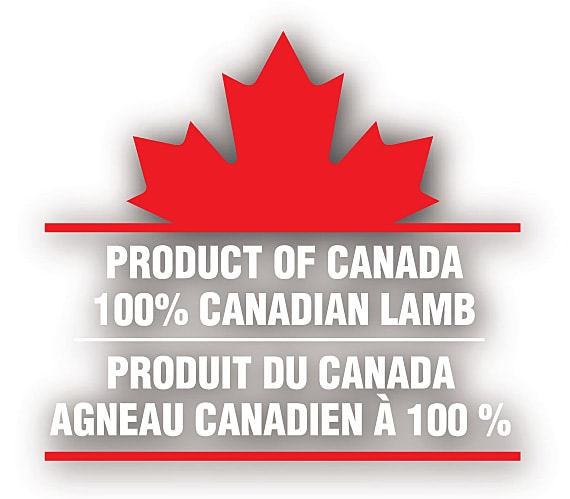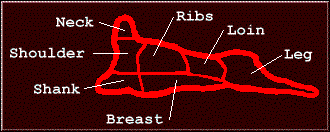Lamb is a delicious, versatile alternative to other meats. Historically, served as a spring delicacy, lamb can now be enjoyed year round. From riblet to roast, lamb’s delicate flavour combines and compliments a wide variety of herbs and spices, vegetables and/or fruits. Visit the Fresh Canadian Lamb site for information; explore its tools and resources designed to help send key messages throughout the industry and to consumers about the value, benefits, and enjoyment of this Canadian product.
Holiday calendar when lamb is featured.

Saskatchewan Lamb
There are approximately 1000 dedicated producers raising lamb in Saskatchewan. Throughout the province lambs graze on native wild herbs, prairie grasses and grain. The clean air, fresh water and prairie sunshine all contribute to the delicate flavour and nutritious quality of Saskatchewan lamb.
For additional information on purchasing lamb for your favorite recipes visit www.saskfoodfind.com,www.meatocracy.com and for recipes please visit Simply recipes for Lamb, Ontario Lamb recipes at lambrecipes.ca or the Lean on Lamb website.
When shopping for lamb look for:
| Canadian Lamb which is meat from an animal less than a year old. | |
| Genuine Canadian Spring Lamb which is meat from an animal less than 2-3 months old. | |
| Young lamb which should be pink, firm and fine textured. A cross section of the bone should be red, moist and porous. | |
| Older lamb cuts should be lean and light red. Although a cross section of the bone will appear drier it should still be hard and red. | |
| The colour of the fat will vary depending on the breed, age and type of feed which was used. |
Lamb Is:
| Tender because the muscles in the meat have not been well developed or used. | |
| Best cooked at low temperatures, approximately 160° C (325° F) and not overcooked. | |
| Most appetizing when served piping hot or well chilled. | |
| A good source of protein, iron and B vitamins (niacin, thiamin and riboflavin). |
Cuts to buy:

Cooking Method:
Leg, Loin, Ribs, Shoulder, and Shank. Cooked by dry heat, usually roasted. Chop from these cuts are broiled. Shoulder chops can also be braised.
Breast, Shank and Neck. Cooked by moist heat methods, simmering or braising.
General Cooking Tips
| Lamb should be cooked at low temperature i.e. not higher than 160? C (325? F). | |
| Frozen lamb does not need to be thawed before cooking. The cooking time required depends on the cut and thickness of the cut. | |
| A thick cut of lamb requires more cooking time than a thin cut of the same weight. | |
| Lamb with an outside layer of fat requires more cooking time than that with little or no fat. | |
| Boned or rolled roasts require more cooking time time per gram (pound) than roasts with bone in. |
| Refrigerator, 4? C (40? F) | Freezer, -18? C (0? F) | |
| Roasts | 2-3 days | 6-8 months |
| Chops | 2-3 days | 4-5 months |
| Ground Meat | 1-2 days | 2-3 months |
| Variety Meats (heart kidney) | 1 day | 3-4 months |
For Cooking Excellence:
Roast leg, loin, and shoulder cuts at 150 – 190° C (300 – 375° F), rib roasts at 175 – 190° C (350 – 375° F).
Braise frozen thick chops, shanks, and neck slices only slightly longer than comparable defrosted cuts.
Frozen chops and patties should be broiled further from the heat to ensure that the meat does not brown on the outside before it is fully cooked. The time required varies depending on thickness and broiling temperatures.
Internal Temperatures:
To determine if lamb is done take the internal temperature at the center of the roast with a meat thermometer.
| Degree of Cooking | Internal Temperature |
| Rare | 60° C (140° F) |
| Medium | 65° C (150° F) |
| Well done | 70° C (160° F) |
